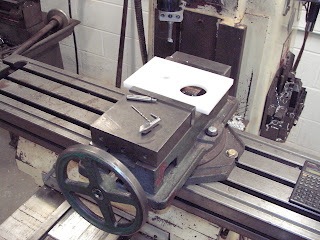I have been asked a few times why I am moving the batteries out of the engine room. I have a few reasons for performing this modification, but the primary reasons are improving the sea keeping characteristics of the vessel, and facilitating improved access to the machinery in the engine room. By placing the batteries on either side of the fresh water tank, approximately 300 pounds of weight is moved forward and down approximately 6 feet. This redistribution of weight improves the rough water response of the vessel, and provides for a smoother ride.
I also do all my own maintenance and repairs, so the improved engine room access is important to me. The space between the engines is now opened up, and I have a place to stand while working. With the factory setup, the bilge pumps are located underneath the battery mounting platform, and can't be reached at all (unless you are a 4 armed masochistic contortionist). The mounting platform is really just a painted piece of 3/4" marine plywood that the factory screwed down to the stringers. It normally extends all the way across the rear of the boat, with 2 batteries in the middle, and the Vernalift mufflers on each side. I will be making custom mounting platforms for the two mufflers, so I won't have the mounting platform covering the bilge pumps anymore. Presto - easy bilge pump access!
New pictures today show the starboard side of the forward engine room bulkhead. I remounted and secured everything, after the paint had time to cure fully. The access plates for the fresh water inlet and vent hoses, and the pump and level detector lines, were rough cut plywood from the factory - not very visually appealing. I made new access panels from white Delrin plastic. The holes were precisely located on my milling machine, then bored to size with a Criterion boring head and carbide cutter - details in the pics. The panels are made in 2 halves, so they can be removed without disturbing the lines. Now that the sealant has had time to cure, they form a rigid structure with the forward bulkhead, and also form a watertight seal with the cabin.




No comments:
Post a Comment